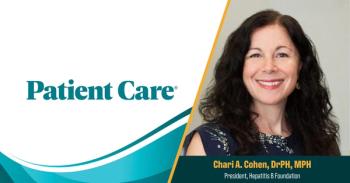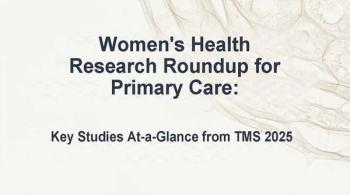
Inequities in Menopause Care: How Provider and Patient Factors Combine to Limit Treatment
TMS: Menopause care isn’t one-size-fits-all—and that’s the problem. Wake Forest data reveal deep disparities in who gets treated and how.
Two new studies from Wake Forest University School of Medicine, presented at
Drawing on data from more than 5,400
Only 17.1% of women seeking menopause care received any prescription treatment—an astonishingly low figure given that up to 80% of women experience symptoms that can persist for years. Yet even within that small proportion, the odds of receiving systemic estrogen, vaginal estrogen, or nonhormonal therapy varied sharply depending on both provider characteristics and patient demographics.1,2
The Provider Effect
Among treated patients, vaginal estrogen was most commonly prescribed (47%), followed by systemic estrogen (34%) and SSRIs (16%). But treatment patterns depended heavily on the specialty providing care. OB/Gyn clinicians prescribed systemic estrogen at far higher rates than internal medicine (OR 0.43, 95% CI 0.29–0.64), family medicine (OR 0.50, 95% CI 0.33–0.76), or endocrinology (OR 0.16, 95% CI 0.05–0.52) providers. Conversely, internal and family medicine clinicians were far more likely to prescribe SSRIs than OB/Gyn.1
Advanced practice clinicians, including nurse practitioners and midwives, also played a pivotal role. Both groups prescribed systemic estrogen more frequently than attending physicians—midwives at more than twice the rate (OR 2.32, 95% CI 1.42–3.77). The authors suggest that differences in training, comfort level, and practice focus may all contribute to these prescribing gaps.1
The Patient Effect
Patient-level analyses revealed equally stark disparities. Black women were significantly less likely than White women to receive any prescription treatment for menopause symptoms (OR 0.79, 95% CI 0.67–0.95) and 36% less likely to receive systemic estrogen specifically (OR 0.64, 95% CI 0.47–0.87). At the same time, they were more likely to be prescribed SSRIs (OR 1.49, 95% CI 1.04–2.14).2
Insurance status further compounded inequities. Compared with women with managed care, those with Medicaid or Medicare were roughly half as likely to receive systemic estrogen (OR 0.50 and 0.46, respectively). Although Hispanic women overall did not differ significantly from White women in treatment rates, Spanish as a primary language was associated with increased use of vaginal estrogen (OR 1.62, 95% CI 1.09–2.42).2
A System of Intersecting Barriers
Taken together, these findings illustrate how provider- and patient-level factors intersect to produce compounded barriers. A Black woman with Medicaid seen by an internal medicine physician may face a triple disadvantage—each factor independently reducing her likelihood of receiving systemic estrogen, together producing dramatically lower odds of treatment. In contrast, a White woman with managed care insurance treated by an OB/Gyn midwife is positioned at the opposite end of the care spectrum.1,2
Implications for Practice
Lead author Anna C. Cochrane, MD, MSCR, assistant professor, general obstetrics and gynecology, obstetrics and gynecology at Wake Forest University School of Medicine, and colleagues emphasize that these patterns likely reflect a mix of educational gaps, practice constraints, and both implicit and explicit biases within the healthcare system. They argue that improving menopause care equity requires standardized education on menopausal hormone therapy and symptom management across all provider types and specialties.1,2
The authors conclude that their dual analyses provide a clear framework for action: to target disparities not only at the level of individual patients, but within the structure of medical training, reimbursement, and clinical workflow. Their findings highlight specific and actionable targets for educational intervention and and lay the groundwork for improving the quality of menopause care for all women, they said.
References
McAllister VM, O'Connell NS, Jensen ET, Cochrane AC. Provider-level factors related to receiving treatment for menopause symptoms. Abstract presented at: The Menopause Society’s 2025 Annual Meeting; October 21-25, 2025; Orlando, FL. Accessed October 22, 2025.
Cochrane AC, McAllister VM, Jensen ET, O'Connell NS. Patient-level factors associated with receipt of prescription medication for menopause symptoms. Abstract presented at: The Menopause Society’s 2025 Annual Meeting; October 21-25, 2025; Orlando, FL. Accessed October 22, 2025.
Newsletter
Enhance your clinical practice with the Patient Care newsletter, offering the latest evidence-based guidelines, diagnostic insights, and treatment strategies for primary care physicians.
























































































































































































































































































